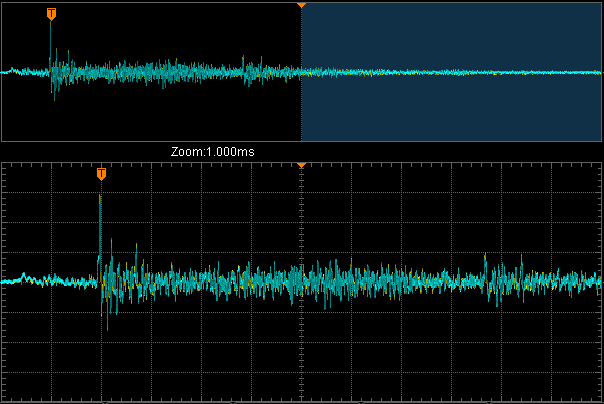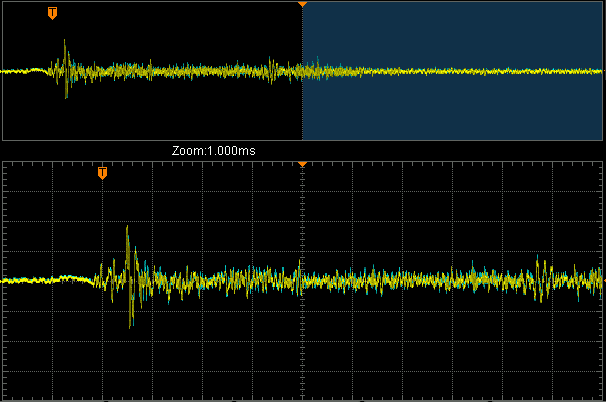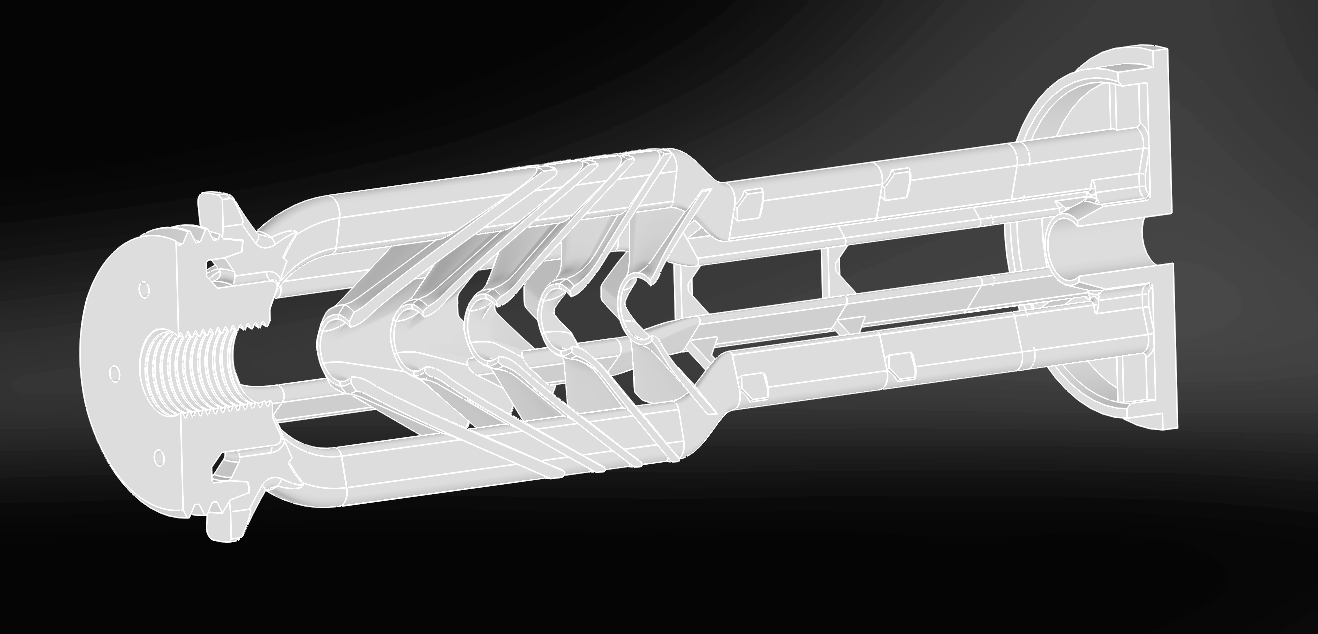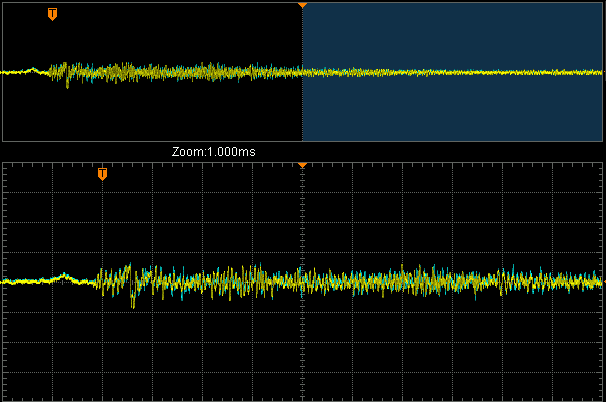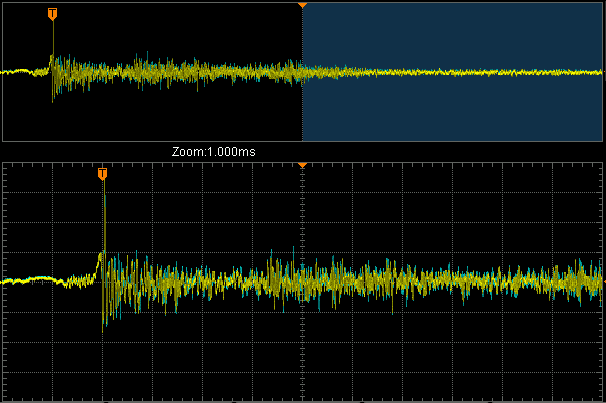Airgun Moderator Design, Performance, and Development - Big(er) Bore Tests (part 9)
Silent Thunder Ordnance
Catch the previous episode HERE.
So enough people have picked up one of these moderators now that I figure I should probably test and design some at higher power outputs. To that end, I picked up a FX Crown VP in .30 cal to test with a little more go juice. The thing consumes about twice to 2.5 times as much air per shot as the .22 Crown, slinging a JSB 50.15 grain pellet at 850FPS for 80 footpounds of muzzle energy. Cool beans eh? I'm still less than entirely amused over the cost of ammo, which is more expensive than the match grade rimfire I use in my favorite PB, but I digress.
So the first and most obvious question is how do my designs which were optimized on the .22 perform on the .30? So far the feedback I've gotten from other people who've used them is “great,” but I'd bet 100$ they're not fully optimized for almost three times the kinetic energy. Hell the factory shroud extended on this thing, which was simply unpleasant on the .22, is now physically painfully loud when shot indoors. All that sound reflecting back off the walls of my indoor range leaves my ears ringing. So how does everything stack up?
Factory Shroud Extended – 637.6, 617.2 – It is loud, what did you expect? Just for quick reference, the peak from the .22 with shroud extended is usually around 250. 250 is also about what a stock Edgun Leshiy meters at. So this is much much louder. I should note that I had to significantly adjust the scale on these captures so that they weren't, literally, OFF THE SCALE. :P So if you're wondering why they look about the same or lower than some of the above traces, that is why, the scale is different. ;) Why the two numbers and two traces? Because sound loves to resonate up and down hollow tubes, and what was a faint ping on the .22 is a very loud and annoying ping on the .30. So the higher one is before the shroud damper, and the lower one after. It wasn't supposed to cut the peak, but it did, so what can you do right? I made an entire post on just the shroud damping, so if you're curious check that out.
Levitas – 302 – my first design, small and light at just 35mm in diameter and 120mm long and just 50 grams. Pretty tiny for this kind of setup, and optimized for performance on the .22 obviously. Still, I think cutting the peak by more than half on a RETRACTED shroud (all the tests are with a retracted shroud except for the obvious extended shroud test) I'll call a win. I bet I can optimize this considerably for the shrouded .30 though, and my best guess is I can get it down to somewhere around 160-190ish. In the next couple Pilum tests you'll see why.
Pilum SD – 278.6 – SD stands for Single Diode, as in it has a single gas diode for flow delaying and the rest is sound damping. I've had this Pilum kicking around for a while now, it and the DD variant are both comparable in terms of sound attenuation on the .22 Crown. Now that flow is a more significant issue though, the differences are more apparent.
Pilum DD – 208.6 – DD obviously stands for Double Diode, and here we can see adding just one more diode took 70 points off the peak. Not too shabby.
Pilum QD – 92.6 – QD stands for quad diode, four diodes and just a little sound damping material at the very end. This is staggeringly good performance. It has a little “whoosh” to it as the significant volume of air empties out, but after all my silencer testing I'd have never imagined I'd be able to get an 80 foot pound gun this quiet with this small a moderator. I almost can't believe shooting it just how well it muzzles the bark, you wouldn't guess it was a .30 if it weren't for the much louder “slap” of the pellet hitting the muddy backstop 100 yards down range. I'm happily confident this is actually optimized for this gun. Why? Two reasons. First, the trace shows the peak is about level with the protracted sound of the moderator draining, which can, but isn't necessarily, a good indicator of optimization. (it can be just an indicator of a very noisy design) The second reason is that, if you assume a roughly 70 point reduction per diode (it isn't linear, and doesn't work like that, but we're talking rough numbers here) that means the estimate is 68 with 4 diodes. 5 diodes wouldn't physically fit and would break the trend. 3 would be significantly louder than 4. Thus 4 with just a little bit of sound damping is almost certainly optimized for this size envelope. So yeah, pleasantly surprised and pleased with this one.
And now I want to take a brief pause to put a final nail in the “bigger diameter is better” hypothesis of moderator design. This is what me desperately throwing a bunch of spitballs at the wall and hoping something sticks. I tried conventional, I tried unconventional, I tried small diodes in large tubes, and of course I've tried the good old hair curlers and washer baffles, that is to say flat faced baffles with felt held around the perimeter. (I did put a few rounds through some famous manufacturers' big designs and they are VERY loud. I don't want to kick any brands here, but they do NOT get magically quieter with more air volume. So as counterintuitive as it is, and as much as I'm running over what is clearly airgun silencer dogma, currently the data is unequovical: a large diameter moderator of conventional design will not out-perform, and thus far will exclusively under-perform, its efficiently designed smaller diameter brethren. And this is to the extent that a Donny Sumo or Clague will be louder on a 32 foot pound Crown than the Pilum QD on an 80 foot pound Crown.
I am NOT giving up. Just because every single large-moderator-diameter test and experiment has resulted in abject failure doesn't mean it isn't possible to make a large diameter moderator perform well. What you're about to read below are more of my failures, but just a selection of the most interesting ones as there have been too many to recount at this point. As I think is pretty clearly demonstrated by said failures I don't understand the mechanism for why this occurs, why larger OD moderators are louder, however I am determined to make one which works well.
Mus Star – 172 – This design essentially incorporates traditional conical baffles of descending angle in what would be an otherwise fairly traditional design. Up front, as per usual, sound damping materials are incorporated into the skeletal area. And it didn't work, to be clear. This is still quite loud.
HBVF Star – 77 – So this was a bit of an odd duck, and you'll note it is marginally quieter than the Pilum QD. I'm still calling it a failure though. Why? Because with several times the volume to and a lot more mass to work with, I'd like to take more than a measly 14 points off the average. Basically, it worked, but isn't good enough. The basic premise of the design is a little hard to interpret from the picture, but basically it puts a conical baffle moderator of similar design to the Pilum inside a tube which is then incorporated into the tube. It is kind of like a russian nesting doll of silencers. The extra outside volume then becomes blast chamber volume. This thing was a pain to design and an even bigger pain to assemble. You might be asking why not gas diodes, and the answer is I made such a beast but on testing day it had assembly issues and so its performance was inconclusive.
Foamtastic – 262.6 – This was another shot in the dark. The dogma is sound damping, not baffles, and large volume are what creates quiet moderators.... okay, lets try that. So one gas diode, vented into damping material and the rest of the design also full of sound damping material. Take a wild guess how that went. Also note that it was about as loud as a Pilum with a single diode. So while I'm not sure this diode was working effectively, all this volume accomplished basically nothing.
It'll come as a bit shock, but I have some ideas for where to go next with this. As far as I'm concerned, personally anyway, I've laid to rest the “bigger is always better” idea. Clearly design language which works on smaller silencers doesn't work on larger ones. And it isn't because the sound damping is innately ineffective, because if you look at the traces you can clearly see the post-peak-noise is effectively damped, but that initial spike is not. If you did your testing on a sound meter not capable of capturing that peak, which is the overwhelming majority of them, it'd be easy to fool yourself into thinking that bigger just works.

